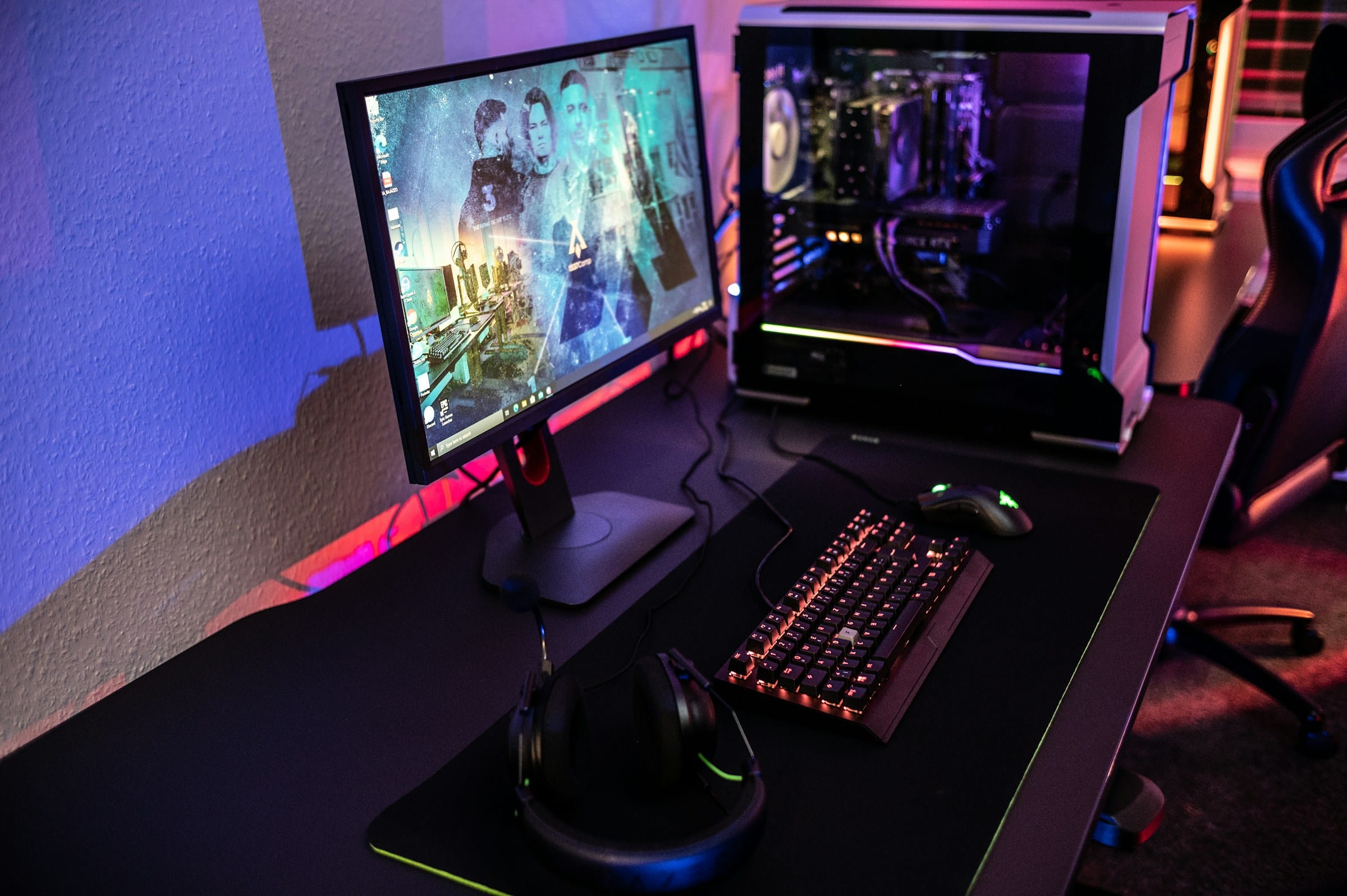How can developers use procedural algorithms to create diverse alien biomes in sci-fi games?

Welcome to the fascinating world of sci-fi gaming, a deep cosmos where digital universes are powered by the intricate dance of code and imagination. The procedural generation of fantastical alien biomes has become a hallmark of the genre, captivating players with the thrill of exploring uncharted territories. From the frost-ridden terrains of distant planets to the technicolor skies of alien worlds, the technological wizardry that brings these dynamic environments to life is nothing short of breathtaking. So, how do developers use procedural algorithms to create such expansive and diverse alien biomes in sci-fi games? Let's delve deeper into this intriguing topic.
The Power of Procedural Generation
In the world of game development, procedural generation is a tool that has been crucial in shaping the landscape of modern gaming. This technique employs algorithms to generate content automatically, giving developers the ability to create vast, varied, and unpredictable environments.
A voir aussi : How can developers ensure inclusivity in VR experiences for players with physical disabilities?
The magic of procedural generation lies in its ability to bring forth a multitude of unique elements from a set of predefined rules. This capability is especially useful in the creation of alien biomes, where the aim is often to transport the player to otherworldly landscapes not bound by earthly conventions. Through this technique, games can generate an endless diversity of flora, fauna, and terrain types, providing an ever-changing landscape for players to explore.
The Role of Algorithm in Terrain Creation
The creation of diverse terrains is central to the procedural generation process. A terrain algorithm is essentially a mathematical function that dictates the arrangement and characteristics of the in-game environment. It manipulates parameters such as elevation, roughness, and climate to create a wide array of landscapes.
En parallèle : How can developers use AI to create dynamic storylines in interactive fiction games?
The use of noise functions, such as Perlin and Simplex noise, is prevalent in creating procedurally generated terrains. These functions generate a range of values that can be used to map the terrain's height, allowing for the creation of complex and varied landscapes. With the help of a terrain algorithm, developers can create everything from towering mountain ranges to serene alien lakes, providing players with a rich and immersive gaming experience.
The Art of Procedurally Generated Skies
Just as the terrain makes up the physical playground of a game, the sky forms the celestial backdrop that defines the overall mood and atmosphere. Procedurally generated skies in sci-fi games extend the potential for exploration beyond the terrestrial and into the cosmic.
In order to create these skies, developers use a variety of techniques, from scattering algorithms that simulate the diffusion of light in the atmosphere to dynamic systems that generate shifting clouds and weather patterns. The result is a sky that is not only visually captivating, but also able to convey a sense of time and place. With the aid of procedural generation, the sky is no longer just a static, painted backdrop, but a dynamic aspect of the game world that players can interact with.
Procedural Generation and Player Experience
As vital as it is to developers, the true power of procedural generation lies in the experience it offers players. By creating a sense of unpredictability and infinite possibility, it fosters a unique sense of exploration and adventure.
Every time a player enters a procedurally generated world, they are presented with a new and unexplored terrain. This unpredictability keeps the gaming experience fresh and intriguing, encouraging players to return time and again to discover new environments and challenges. In a procedurally generated game, the player is not just a passive observer, but an active explorer, constantly encountering unforeseen obstacles and making on-the-spot decisions.
The Future of Procedural Generation in Sci-fi Games
As technology continues to advance, the potential for procedural generation in sci-fi games is vast. Already, we have seen its power in games like No Man's Sky, which uses procedural generation to create an astonishing 18 quintillion planets for players to explore.
In the future, we can expect to see even greater complexity in the procedural generation of alien biomes. With the advent of more powerful algorithms and increased computational power, developers will be able to create ever more intricate and lifelike environments. Perhaps we will see games with fully simulated ecosystems, dynamic weather systems, and even procedural narratives that adapt to the player's actions.
The universe of sci-fi gaming is ever-expanding, with procedural generation at the helm of this interstellar journey. With the capacity to create limitless alien worlds and the potential to redefine player experiences, the future of procedural generation in game development promises to be as expansive and exciting as the cosmos itself.
Biome Trends in Procedural Generation
In the world of sci-fi gaming, biome trends play a crucial role in providing an immersive and diverse gaming experience. While games like Star Citizen and No Man's Sky have popularised the concept of vast, procedurally generated universes, the challenge for developers lies in creating distinct biomes within these universes that are as diverse and unpredictable as Planet Earth.
The idea is not just to create a single biome, but dozens of distinct biomes, each with their own unique characteristics, flora, and fauna. This is where the procedural generation really shines, allowing developers to create a multitude of ecosystems using a set of predefined rules and algorithms.
This trend of distinct biomes in sci-fi gaming is inspired not just from the diverse environments on earth but also from the imaginations of sci-fi movies. Just like sci-fi movies follow a wide variety of biome trends, from desert planets to icy wastelands, so do games. This trend has been embraced by developers like Hello Games, who have used procedural generation to create a wide variety of biomes in their game No Man's Sky.
Moreover, procedural generation is not just about creating a diverse range of biomes, but also about ensuring that each biome is unique and unpredictable in its own way. This means that even within a single biome, the terrain generation can vary significantly, creating an ever-changing landscape for players to explore.
The Role of References in Procedural Generation
References play a crucial role in procedural generation, providing a set of rules and guidelines for the algorithms to follow. While the aim of procedural generation is to create unpredictable and unique biomes, the use of references helps ensure that the generated content remains within the realms of possibility.
When creating alien biomes, these references can come from a variety of sources. For example, developers may draw inspiration from real-world ecosystems, sci-fi movies, or even the work of renowned artists like Krash Megiddo who is known for his fantastical and otherworldly landscapes.
These references help define the parameters for the procedural generation algorithms, guiding the creation of flora, fauna, and terrain types. By adjusting these parameters, developers can control the overall look and feel of the generated biomes, while still retaining the element of unpredictability that comes with procedural generation.
In the world of sci-fi gaming, the potential of procedural generation is vast and ever-evolving. As we have explored, developers can use this powerful tool to create diverse alien biomes, taking players on an interstellar journey through uncharted territories.
From varying the terrain generation within a single biome to creating dozens of distinct biomes, the possibilities are virtually endless. And with the use of references, developers can create intricate and immersive biomes that remain grounded in reality while still pushing the boundaries of the imagination.
In the future, the scope of procedural generation is set to expand even further, with the advent of more powerful algorithms and increased computational capabilities. Perhaps we will see games with fully simulated ecosystems, dynamic weather systems, and even procedural narratives that adapt to the player's actions.
In conclusion, procedural generation is not just a tool for game development, but a window into the infinite possibilities of the cosmos. With each procedurally generated game, we are one step closer to exploring the entire planet, and beyond. Amidst the vast and diverse universe of sci-fi gaming, procedural generation remains a beacon of innovation and exploration, promising to take us where no man has gone before.
